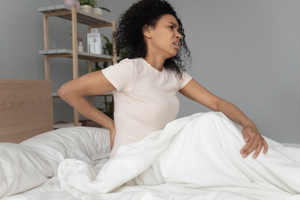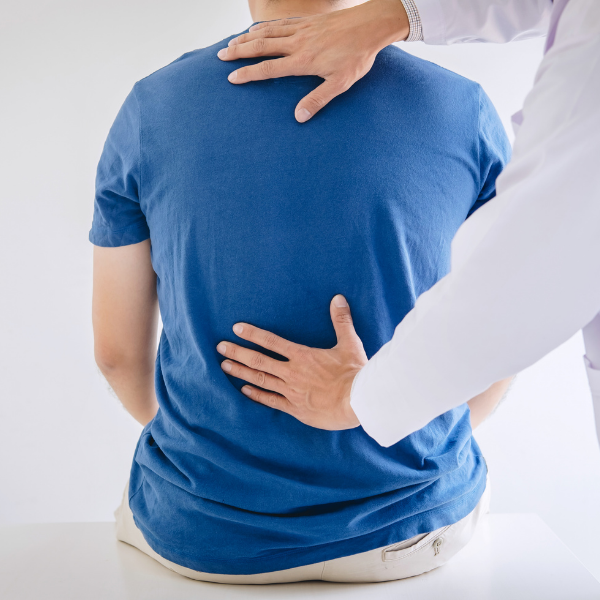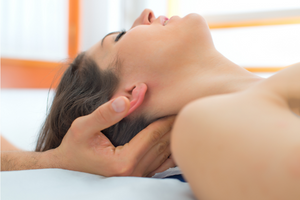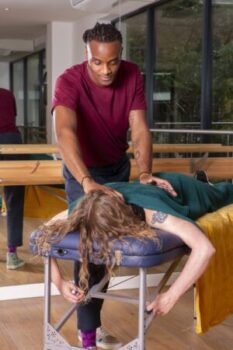Relief for back pain, lower back pain
Has your lower back pain has just occurred when you were out running or maybe you were just getting up from the couch or doing the laundry and felt a sharp pain in your lower back? This is an article is to help you navigate your lower back pain with some useful information.
Your back has many connected parts, including bones, joints, muscles, ligaments, nerves,
and tendons. Your spine supports your back, it’s made up of 24 separate bones called vertebrae stacked on top of one another.
Below the vertebrae, at the bottom of your spine, are the bones in your sacrum and coccyx. If you place your fingers to the top of your bottom then you will have a good idea at where they are.
Between the vertebrae there are discs that act as shock absorbers and allow your spine to bend.
Your spinal cord threads through the vertebrae, this has an important job of carrying nerve signals between your brain and the rest of your body.
The spinal cord runs as far as your lower back, then continues as a bunch of nerves. This is called the ‘cauda equina’, Latin for ‘horse’s tail’, which it’s thought to resemble.
It’s usually difficult for GP’S to say exactly what’s causing back pain. This is because there are so many different parts to your lower back pain and tissues that surrounds it, get to know your structure have a look at Your spine .
Most of the time your back pain Is the symptom, but the root cause is what is driving your back pain and that’s why most people live with back pain because they don’t get to the root cause of the problem, they keep on chasing their symptom’s.
That’s the key, diagnosing what is driving your lower back pain. Of course, you need to make sure your pain is under control and by finding out what is driving your back pain this will ease your lower back pain quickly.
Any health professional who tells you it’s because your glutes are weak, and your muscles are tight then I suggest you walk out the room! There is more to back pain than that. If it was down to poor muscles then it would be much easier for most people to get rid of their back pain, and it wouldn’t be responsible for time loss from work or what the NHS spends most of their finance on.
Activity modification
When you feel the first occurrence of lower back pain you should stop any activity which is making it worse, such as any fitness regime you may be undertaking. If walking is very painful try and limit the amount you do.
But don’t want to just stay in bed, instead, you must find the right modifications for you because everyone is different, and it takes different approaches to ease your symptoms.
But don’t want to just stay in bed, instead, you must find the right modifications for you because everyone is different, and it takes different approaches to ease your symptoms.
Symptoms of lower back pain
Your back pain symptoms will vary depending on two things. Was it a contact injury from trauma, for example, falling of your bike or a car accident? Or is it an accumulating injury where you have felt something wasn’t right for a while and just by doing something like lifting an object or were putting your sock on but have triggered your back pain.
Symptoms vary from person to person, and this depends on how you did it and your past injury history as far back to childhood can play its part in present day. These things don’t just happen, there is always a story and that’s the key to getting rid of your back pain.
Your symptoms might consist of localised pain on the spine itself or ether side of the spine around the muscles. Some people experience pain radiating in the buttock to down to the leg. This is referred to as sciatica.
Look at the Dermatomes. Where is your lower back pain symptom radiating from? This is highlighting which part of the sciatica nerve is involved with your lower back pain. Now you need to find out why this has occurred with a medical professional.
Causes of lower back pain
Non-specific back pain
This is accumulating injury which has always been there but a change in activity, working from home or more gym base our outside sporting activity has caused your lower back pain to be more prevalent.
Back pain may happen because of the normal ‘wear and tear’ on the bones of your spine. Posture can put stress on the muscles around your spine. Your back pain may be caused by a combination of several factors, including emotional ones.
Specific back pain
This could be from specific incident or trauma from a car accident or a sporting activity which could be the main driver to your lower back pain. Where the sciatica nerve has been compromised by a disc bulge could be a factor. Inflammatory, autoimmune condition issues with your gut can all be triggers to your lower back pain. Don’t just think it’s because you have weak and tight muscles, which is what most health professionals will say. If this was the cause, there wouldn’t be so many people complaining of back pain.
When to get medical help and advice
If you are experiencing any pins and needles, loss of bowl, bladder movement and foot drop or muscle weakness you should contact your GP or A&E straight away. There is a chance you have compromise your disc and spinal nerve.
Also, if you have experienced any traumatic event, you should get overlook by a health professional.
As mentioned above a few days of back pain mean there is an issue, and you need to see a health professional to find out why you have lower back pain. Just taking medication to help take the pain away is not going to inform you why this happened.
Diagnosis by GP or Physiotherapist
Your doctor or therapist will examine your lower back pain and assess your ability to sit, stand, walk, and lift your legs. We might also ask you to rate your pain on a scale of zero to 10 and talk to you about how well you’re functioning with your pain.
These assessments should help determine where the pain comes from, how much you can move before pain forces you to stop and whether you have muscle spasms. They can also help rule out more-serious causes of back pain.
If there is reason to suspect that a specific condition is causing your back pain, your doctor might order one or more tests:
- X-ray. These images show the alignment of your bones and whether you have arthritis or broken bones. These images alone won’t show problems with your spinal cord, muscles, nerves, or disks.
- MRI or CT scans. These scans generate images that can reveal herniated disks or problems with bones, muscles, tissue, tendons, nerves, ligaments, and blood vessels.
- Blood tests. These can help determine whether you have an infection or other condition that might be causing your pain.
- Bone scan. In rare cases, your doctor might use a bone scan to look for bone tumours or compression fractures caused by osteoporosis.
- Nerve studies. Electromyography (EMG) measures the electrical impulses produced by the nerves and the responses of your muscles. This test can confirm nerve compression caused by herniated disks or narrowing of your spinal canal (spinal stenosis).
Treatment options for lower back pain
Your GP or specialist may recommend a Physiotherapist
This might include:
- exercises involving physical activity, movement, muscle strengthening, controlling posture and stretching
- ‘Hands on’ (manual) therapy, such as massage or spine manipulation
Trying other health professionals such as chiropractic and osteopathy are all helpful if there is a structure to the treatment plan, and you are not just going for 20 sessions without any directions.
If you feel every session is the same and it’s like being on a production line, the same conversation and the same exercises without any direction, then it’s time to search for someone else to take your rehabilitation in another direction.
Most professionals can help but they need to be able to tell you why this occurs and have hypothesis, rather than just massaging a painful area and strengthening muscles because that’s what most people are doing in their 30 or 20 mins sessions. Keep asking questions rather than thinking this person is going to fix all my problems all by their self.
Medicines
Your GP may recommend that you take over-the-counter non-steroidal anti-inflammatory medicines (NSAIDs) – for example, ibuprofen. These can relieve back pain and help you to stay active. Paracetamol alone doesn’t work quite so well for back pain.
If over the counter NSAIDs don’t help, your GP may offer you a higher dose of an NSAID and a medicine to protect your stomach). Or they may recommend a stronger medicine called an opioid. You should usually only take this medicine for a very short time. You may become dependent on it if you take it for a long time. Your GP may also offer you a short course of a muscle relaxant.
In my opinion I will always try the natural anti-inflammatory methods, and this is what I always say to my patients. I fully understand when your pain threshold has been reached, and you can’t sleep this is very tempting. For me, most back pain does not respond to the list above because for the majority of the time your back pain is the symptoms and not the root cause.
So, that’s a big reason why the above list doesn’t work.
until the GP gives you the highest dosage and you are so drowsy that you can’t function.
Have a look at these natural foods 13 anti-inflammatory foods.
Injections and other procedures
Depending on the source of your pain – for example, if you have sciatica pain epidural injections may be helpful. Injections in the spine aren’t recommended for non-specific lower back pain though. If your back pain is chronic (long-term) and other treatments haven’t helped, there is a procedure called radiofrequency denervation that uses a needle to treat the pain.
The list above are all the different surgical procedures that shouldn’t be taken likely, pain can cause you to act swiftly for a quick fix.
I suggest discussing the pros and cons thoroughly with your consultant. For me, the above list in my experience and opinion has only worked on a small population. If you have issues with foot drop bowl and bladder issues then the above list might need to be considered for sure. That would be an emergency. If all has failed then surgery is the last option.
Surgery
This is the last resort, and any conscientious spinal consultant will not perform surgery if it’s not going to improve your lower back pain.
Surgery is always last option and really only performed when it’s an emergency situation which we call red flags. For example, foot drop loss of control of pulling your foot towards, away, loss function of big toe extension and loss of function bowl movements.
All above would require immediate attention this is not something to sit on and see what happens it’s not going to work out well for you.
It’s all about having a good start for your lower back pain
Diagnoses is key for your lower back pain by health professional.
Avoid anything which is going to aggravate your lower back pain.
Gentle and controlled movements prescribed by a health professional is key.
Don’t just look at present day, you should look backwards as far back to childhood. You be so surprised how this could be related to your lower back pain.
My message to you
There are 206 bones in the body and your lower back pain can’t just come down to 5 bones in your lower back. For a small majority this will be the case but not for the majority.
On social media most health professionals will say its because of weak and tight muscles. In my opinion this is not the case in majority of people who has lower back pain. If lower back pain relief was this simple most of the population wouldn’t be suffering with lower back pain.
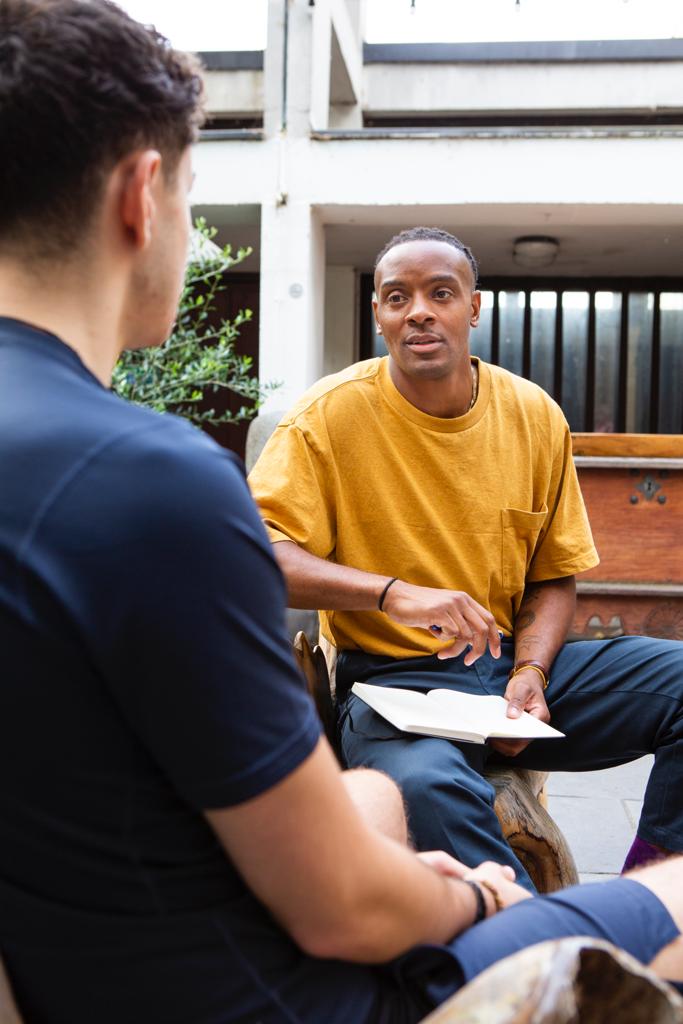
Need a Therapist? Book an Easy One on One Session Today
ACUPUNCTURE
The central nervous system is said to be stimulated by acupuncture sites. As a result, chemicals are released into the muscles, spinal cord, and brain.
ANATOMY IN MOTION
Improve your posture and balance by tracking your movement using Anatomy in Motion activities. It shows you how your feet influence your whole posture and movement.
CRANIOSACRAL THERAPY
A gentle hands-on method that helps realign the body tissues, the bones, fascia, and muscles and helps the body to heal.
Physiotherapy Services
View More >>
Read More About Physiotherapy
Enquire today!
Please fill out the form below, and I will get back to you as soon as possible.
